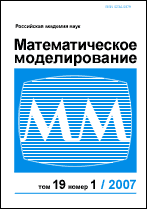|
This article is cited in 1 scientific paper (total in 1 paper)
Increasing reliability of well interaction modeling for analysis of flooding system efficiency
A. N. Tyrsinab, S. V. Stepanovc, A. A. Ruchkinc, A. D. Beckmanc
a Ural Federal University, Yekaterinburg
b Scientific and engineering center "Reliability and resource of large systems and machines" Ural Branch of the Russian Academy of Sciences, Yekaterinburg
c Tyumen Oil Research Center, Tyumen
Abstract:
At present, to analyze the efficiency of the oil field flooding system, proxy models of the CRM family (capacitance-resistive model, capacitance-resistive models) are actively used - mathematical models of the material balance formulated in the framework of the electrodynamic analogy. However, with a large number of production and injection wells, the accuracy of modeling decreases due to the many local minima of the objective function. One of the reasons for this ambiguity of the solution is the lack of a priori information about which injection wells really affect a particular production well. The mask of mutual influence has been determined, which made it possible to significantly reduce the number of determined mutual influence coefficients. A computational algorithm is proposed in which, instead of solving a multi-extremal problem, a sequence of problems with a quadratic objective function and convex constraints on variables in the form of simple inequalities is solved. An example of approbation of the proposed method is given.
Keywords:
mathematical modeling of field development, material balance model, CRM, well interference mask, entropy modeling, forecast.
Received: 31.01.2023
Revised: 28.03.2023
Accepted: 17.04.2023
Citation:
A. N. Tyrsin, S. V. Stepanov, A. A. Ruchkin, A. D. Beckman, “Increasing reliability of well interaction modeling for analysis of flooding system efficiency”, Matem. Mod., 35:6 (2023), 63–80; Math. Models Comput. Simul., 15:6 (2023), 1092–1103
Linking options:
https://www.mathnet.ru/eng/mm4471 https://www.mathnet.ru/eng/mm/v35/i6/p63
|

| Statistics & downloads: |
| Abstract page: | 142 | | Full-text PDF : | 26 | | References: | 31 | | First page: | 6 |
|




 Contact us:
Contact us: Terms of Use
Terms of Use
 Registration to the website
Registration to the website Logotypes
Logotypes








 Citation in format
Citation in format 
